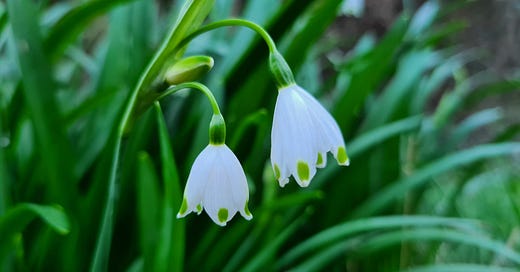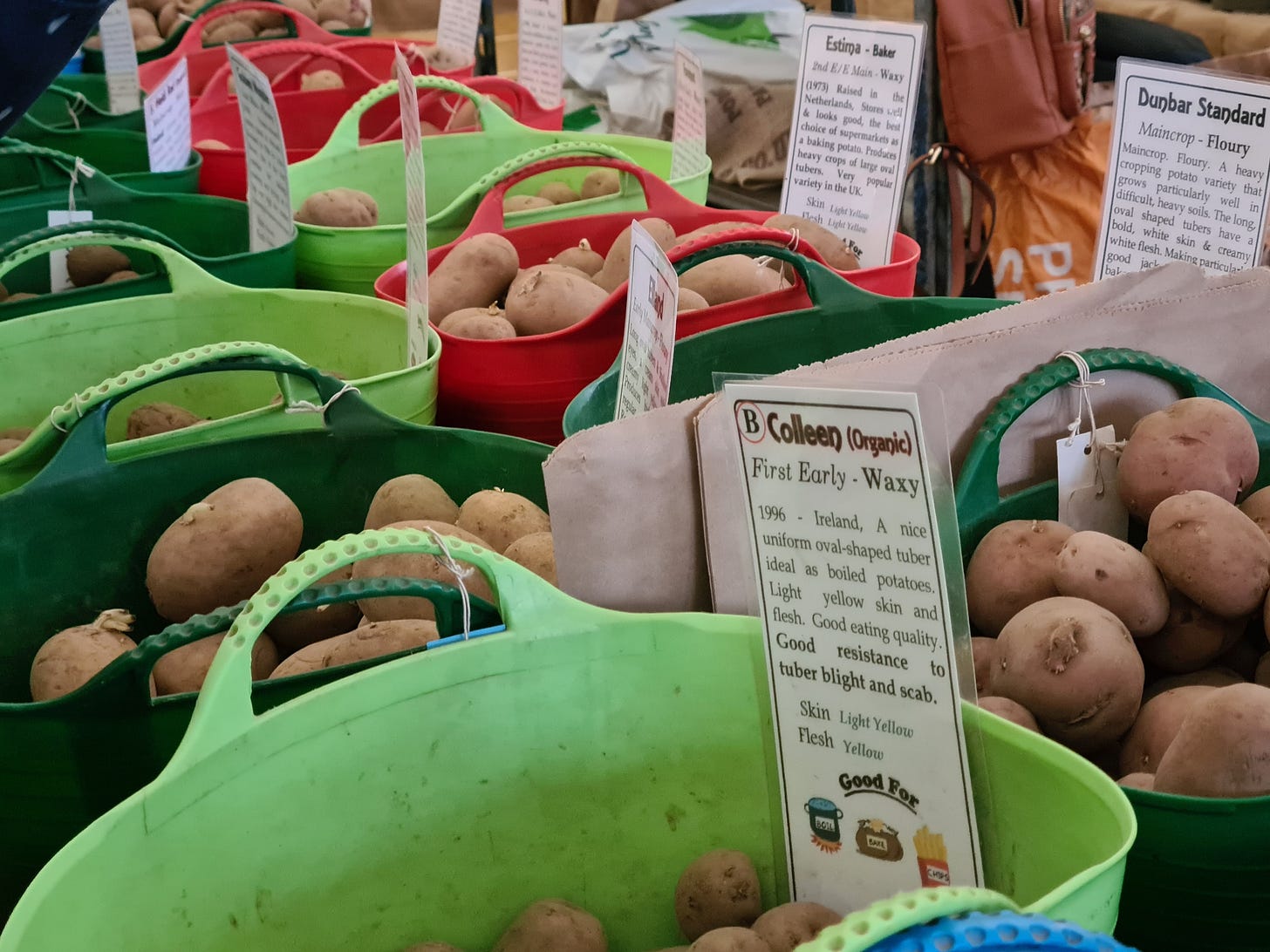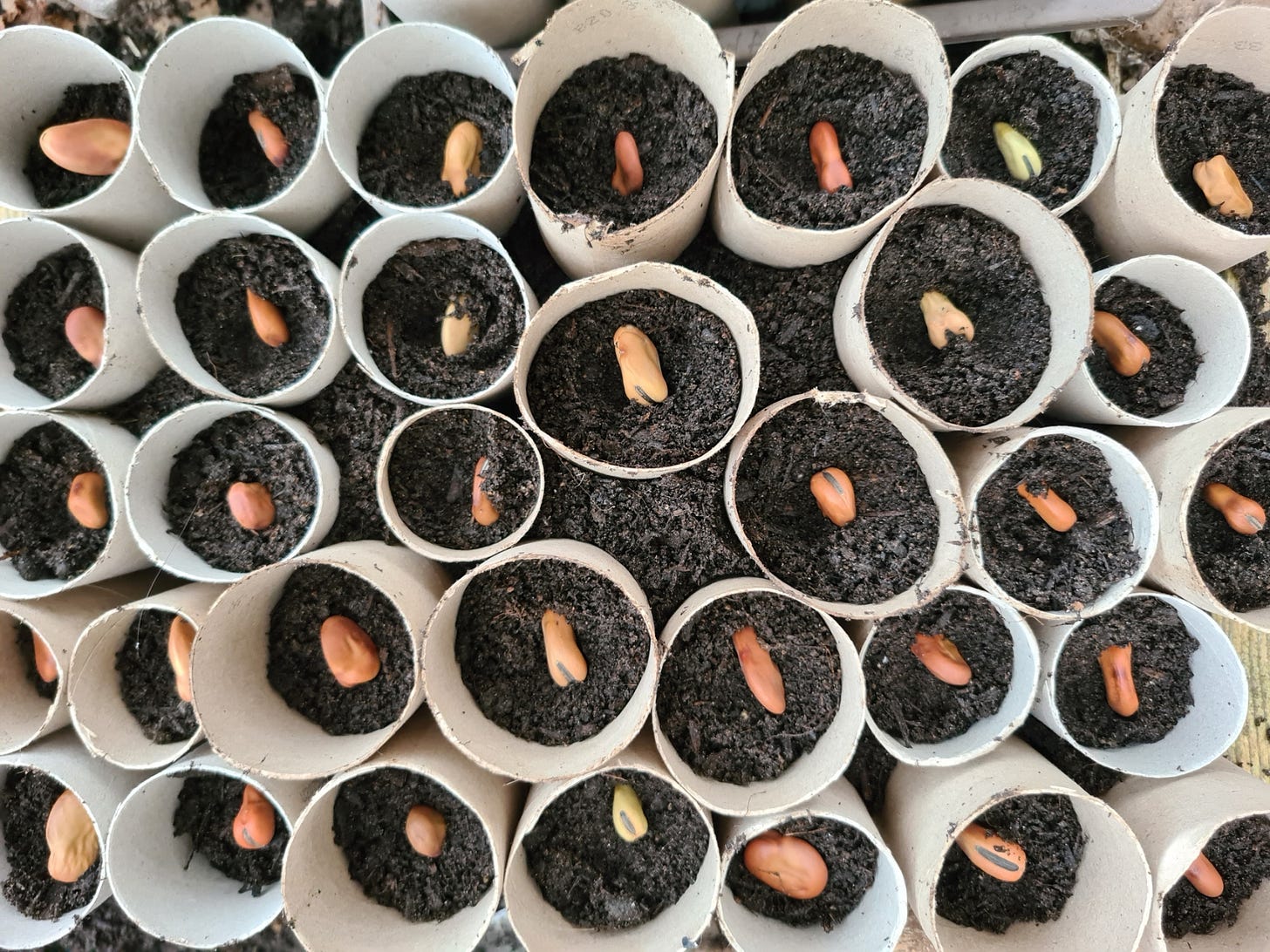Potatoes, sliding into the hungry gap, and what to sow now
That’s it! Now I know the new season has begun.
Potato Days are one of those esoteric rituals which only gardeners really understand. I invited my daughter to come along to this one – “there’s tea and cake!” I offered in an attempt to evoke even a glimmer of interest – and she just looked at me like I’d finally turned into the slightly mossy crazy lady she’d always suspected me to be.
But oh, they are a joy. You turn up to a room filled with dozens of people every one of whom cares just as much as you do about the thing which is dearest to your heart. You recognise the gleam in the eye, the single-minded concentration of purpose, the barely-suppressed joy of planning for a new season.
If you haven’t been to one – what have you been doing? The main series is run in the south-west by Pennard Plants, but there are others happening all over the country. Sadly no single events list exists so you’ll need to do a search, but there’s bound to be one near you.
The big attraction for me is that they’re so low-impact: you buy seed potatoes by the tuber, in paper bags, so no plastic and no waste since you only need buy the quantities you’re going to grow. There’s also bare-root fruit – no pot, no peat – and onion sets by the scoop too (again, no plastic netting required). And tea, and cake.
So I now have potatoes chitting on my windowsill: this fills my heart with joy and hope. I don’t chit potatoes to get them to crop earlier as such: this works for new potatoes, but makes no difference for second earlies or maincrops (I’ve tried side-by-side experiments: no appreciable advantage to chitting later-maturing potatoes at all). But it does prevent your seed potatoes sprouting in their bags. If you let them do this the delicate shoots become elongated and tangled, and when you bring them out to plant them in a couple of months’ time you break most of them trying to separate the whole messy heap. So chitting in eggboxes keeps everything tidy.
Potato varieties for this year: Siena (waxy first early said to do well in drier conditions); Kestrel (second early, robustly reliable for mid-season eating); Cara (another reliable favourite: we’ll see if it’s as blight resistant as the write-up claims); and Kerr’s Pink, a delicious floury maincrop which stores well and has a great flavour. Just fingers crossed it’s a warm, dry summer to keep blight at bay as I have sidestepped the fully resistant Sarpo varieties this year (there was only one on offer and it was Sarpo Mira – rock solid reliable, but the flavour is a bit meh and I prefer Axona or Shona).
It is lovely to have January behind us. I see Imbolc, the little pagan ceremony marking the midpoint between winter and spring, is getting the recognition it deserves: for me it means that little flick of a switch between the hopelessness of winter and the suspended animation of early spring, pregnant with promise but not – quite – bursting forth just yet.
We’re sliding into the hungry gap now: the choice out in the garden is dwindling by the day. Kale, chard, a little parsley, the last of the celeriac… evergreen herbs of course… and that’s it, really. I wish I could say I had some purple sprouting this year but the slugs got it all last spring and it never really got going again, so I am woefully short. Luckily I still have a few of last year’s French beans in the freezer, so that rings the changes a tiny bit.
I am sowing, though cautiously for now: another tray of broad beans has gone into the mouse cage alongside the re-sown overwintering ones, and I am about to plant out the shallots I have carefully set aside to replant this spring. I did the same thing with my garlic, and have been for the last five or six years (since, in fact, I discovered the trick of growing it in the greenhouse to keep it safe from rust). Save your own and you never have to buy in new seed bulbs again. It’s the ultimate in low-impact, low-cost gardening.
And then there are just a few greenhouse crops: chillies (looking forward to Hungarian Black, a new variety for me this year), sweet peppers and aubergines, all of which need an early start and a long, warm season. I’m mixing my own seed compost, from one part soil and one part very well rotted woodchip, and keeping them warm in the house on a windowsill by a radiator. I’ll let you know how they get on!
The second part of the New Veg Plot Starter Course drops this week. Last month we discussed getting to know your new growing space: so now, while things are still on the quiet side, it’s all about getting your new plot growing ready: clearing, soil improvement, dealing with unwanted plants and sorting out your boundaries. As usual I’ll open up an ‘ask me anything’ style thread off the back of it so do join me there!
If you’d like to join in the course, do consider taking out a paid subscription – you can pay per month if you just want to try it out, or commit for longer and save some money. Either way, you also get the key to my entire archive with a year’s worth of posts; plus new extra subscriber-only posts each week. And all that for the cost of a decent cup of coffee!






